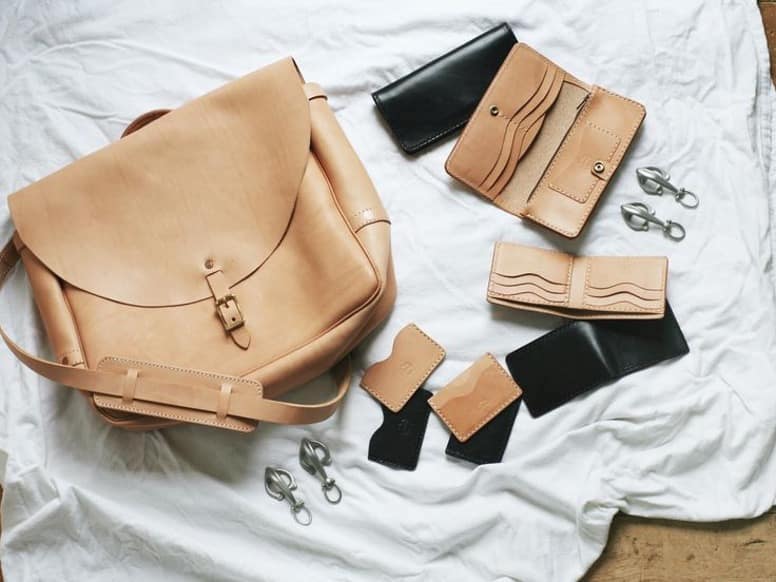Iran has a long history of producing high-quality leather products. In ancient times, leather played a relatively constant role in the Iranian tribes’ life, sometimes used in clothing, especially the shoes of hunters and warriors, sometimes for animal harnesses, sometimes for making utensils, and sometimes in decorations for rituals and ceremonies.
Tabriz city is Iran’s leather and shoe capital, with the largest leather production factory in Iran and the largest factory producing shoe soles in the Middle East. This region has a brilliant history in domestic production and exports to foreign countries. For instance, there was a time when students from foreign countries such as Italy came to Tabriz to learn how to produce leather.
Photo: tabriztrip.com
However, these days, the leather goods producers complain about rising currency prices, export slump, and a ban on importing new machinery, which may threaten this industry in the coming years.
It seems that the Coronavirus outbreak, rising raw material prices, lack of skilled and specialized workforce, and lack of low-interest loans have all caused problems for the leather and shoe industry in Iran. Some challenges for the Iranian shoe and leather producers are mentioned in the following essay.
• Budgets reduction and lack of financial support
Due to rising currency and raw materials prices, available budgets have decreased, and manufacturers require support to survive. Rising currency prices have led to declining capital and, consequently, a lack of liquidity.
Nevertheless, leather goods manufacturers face many obstacles, even for getting high-interest loans. The head of the Tabriz Shoemakers Union stated: Lack of financial support by banks is one of the main concerns in this industry. Unfortunately, loans are not provided for shoe producers, and if there are any, they often require a long process.
• Coronavirus Outbreak
When considering the challenges of the shoe and leather industry in recent years, the impact of the Coronavirus on domestic and foreign markets should not be overlooked. The spread of the Coronavirus has slowed exports.
On the other hand, the shopping malls have been closed over the past two years, which significantly affected the sales in the domestic market. Furthermore, the schools and universities closure and not holding meetings and parties caused severe damage to the industry.
• Lack of skilled and specialized workforce
The lack of schools and universities has drastically reduced the specialized workforce. However, the shoe school, which is going to open, can be somewhat effective over time.
• Lack of an industrial town in the leather industry
Another issue in the shoe and leather industry is the lack of an industrial town. Currently, more than 70% of the workshops are rented, and the lack of a dedicated settlement leads to the decentralization of workshops in one place.
• Excessive increase in raw material prices
Manufacturers cannot sell shoes to customers at the same price as before because of rising raw material prices, such as shoe soles. The excessive increase in the price of raw materials has resulted in an increase in the final price of shoes and the inability of consumers to purchase them, resulting in a market recession. On the other hand, opponents such as Turkey and China have taken the market by offering cheaper products.
• Presence of strong competitors in international markets
Tabriz is considered as the capital of Iranian leather and shoes. In past years, a significant percentage of shoes, bags, and leather goods produced in Tabriz were transited to different countries. However, as time passed, Iran practically lost various markets with the robust activity of other countries such as Turkey, Italy, Taiwan, Pakistan, India, and China.
This was due to the fact that Iranian products were not as diverse as its competitors’ products, and its factories were not operating with the latest technology in the world because of the restrictions on the import of leather machinery.
Moreover, due to the lack of required support to upgrade the leather products and achieve greater profitability in the shortest possible time, many leather manufacturers export their products in raw form to other countries like Turkey and Italy. And these countries re-sell the final product to Iran again at several times the price with only a few changes.
Conclusion
The shoe and leather industry is among the most important and employment-generating industries. On the other hand, they are considered essential goods. Iran is one of the top countries in the world in terms of leather production and export of semi-finished products. It is one of the most talented countries in the field of tanning and leather production.
It has a lot of potential for the leather industry development because of its abundant grasslands and various animal species.
However, today, Iranian leather manufacturers face many challenges, including the excessive increase in raw material prices, budgets reduction and lack of financial support, restrictions on importing new machinery, etc. In addition, the industry is struggling to export its products.
Using high-quality leathers, attending foreign exhibitions, paying attention to extensive publicity in foreign countries, and sending trade and economic delegations can effectively solve the related problems.
Iranian leather and shoe industry need to modernize machinery and be equipped with the latest technology in the world. Besides, significant attention should be paid to teaching new principles and production methods. All in all, removing production barriers and providing financial support can help this industry flourish and grow, create jobs, and succeed in exporting and importing currency.





















